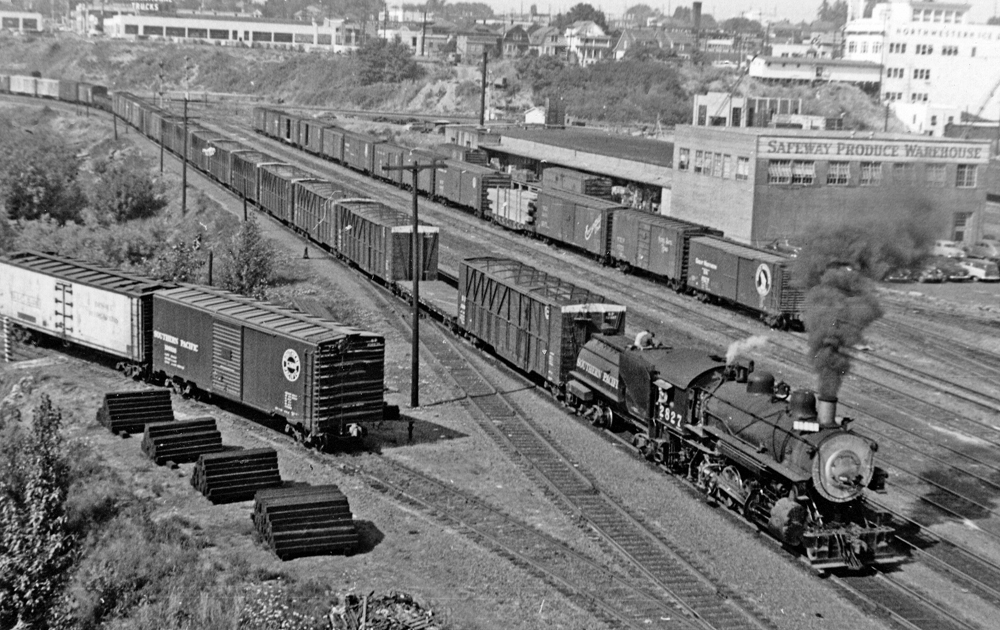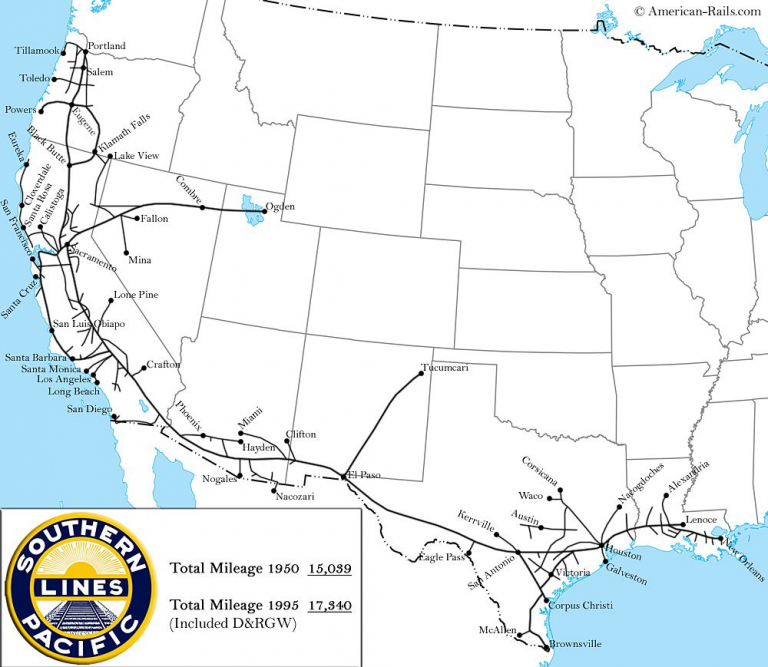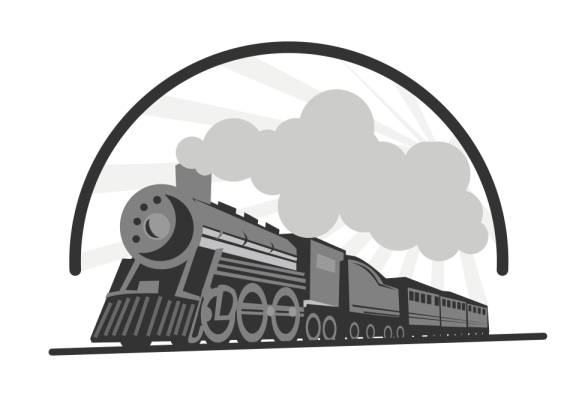In the midst of the 19th century, as the United States stretched from coast to coast, the development of railroads became one of the great expansionist adventures for the country. There was no better way to go broke, or to become wealthy and powerful.
 The Southern Pacific Railroad was originally founded in 1865 by a group of businessmen in California. The new railroad was rapidly able to expand its reach, and in so doing, attracted the attention of the “big four” of western railroad development. Collis P. Huntington, Leland Stanford, Mark Hopkins, and Charles Crocker. These men were behind the Central Pacific Railroad – the western connection with the Union Pacific at the event that brought the First Transcontinental Railroad route to completion in 1869. The Central Pacific wasn’t destined for the remarkable growth realized by the small shoreline affectionately called the “EsPee” – especially after it became the properly of the big four magnets shortly after the “golden spike” was driven in Utah.
The Southern Pacific Railroad was originally founded in 1865 by a group of businessmen in California. The new railroad was rapidly able to expand its reach, and in so doing, attracted the attention of the “big four” of western railroad development. Collis P. Huntington, Leland Stanford, Mark Hopkins, and Charles Crocker. These men were behind the Central Pacific Railroad – the western connection with the Union Pacific at the event that brought the First Transcontinental Railroad route to completion in 1869. The Central Pacific wasn’t destined for the remarkable growth realized by the small shoreline affectionately called the “EsPee” – especially after it became the properly of the big four magnets shortly after the “golden spike” was driven in Utah.



As the U.S. highway and freeway system grew, often paralleling railroad tracks, not all was ideal for the Southern Pacific. Passenger revenues faded from the end of the second world war into the 1960s. In 1971, along with the majority of U.S. railroads, the SP gave up intercity passenger trains to the newly formed National Railroad Passenger Corporation, more commonly known as AMTRAK. The SP operated several long distrace trains for AMTRAK and kept its community line between San Francisco and San Jose, California.
Railroad operations not lost passengers but freeways opened up the world of intercity trucking, and gaining revenue and new contracts meant offering long distance train service at highly competitive rates. The Southern Pacific Transportation Company attempted to create a merger with the Atchison, Topeka and Santa Fe Railroad in 1983, but the Interstate Commerce Commission rejected the proposed merger in 1987, and the Southern Pacific was sold to Rio Grande Industries, the operator of the Denver and Rio Grande Western Railroad one year later with the intention of the SP herald being the surviving brand. It wasn’t to be, as in 1996, the merged SP/D&RGW was sold and incorporated into the Union Pacific Corporation. Overall, these rail lines, collectively called the Union Pacific Transportation Company became the largest railroad company in the United States and controlled nearly all rail-based shipping in the western two-thirds of the United States.
Learn more via the links below:
Southern Pacific Historical and Technical Society
Southern Pacific Company Records
Southern Pacific Railway Museum
Central Pacific Railroad Photographic History Museum
Southern Pacific Photographic Roster
Cornell University – Southern Pacific Coast Division, San Francisco
Archives West, Southern Pacific Railroad collection, circa 1868-1987
EsPee Modelers Archive – 1861 – 1996
Books about the Southern Pacific Railroad
Prototypical N Scale Models of the Southern Pacific Railroad

